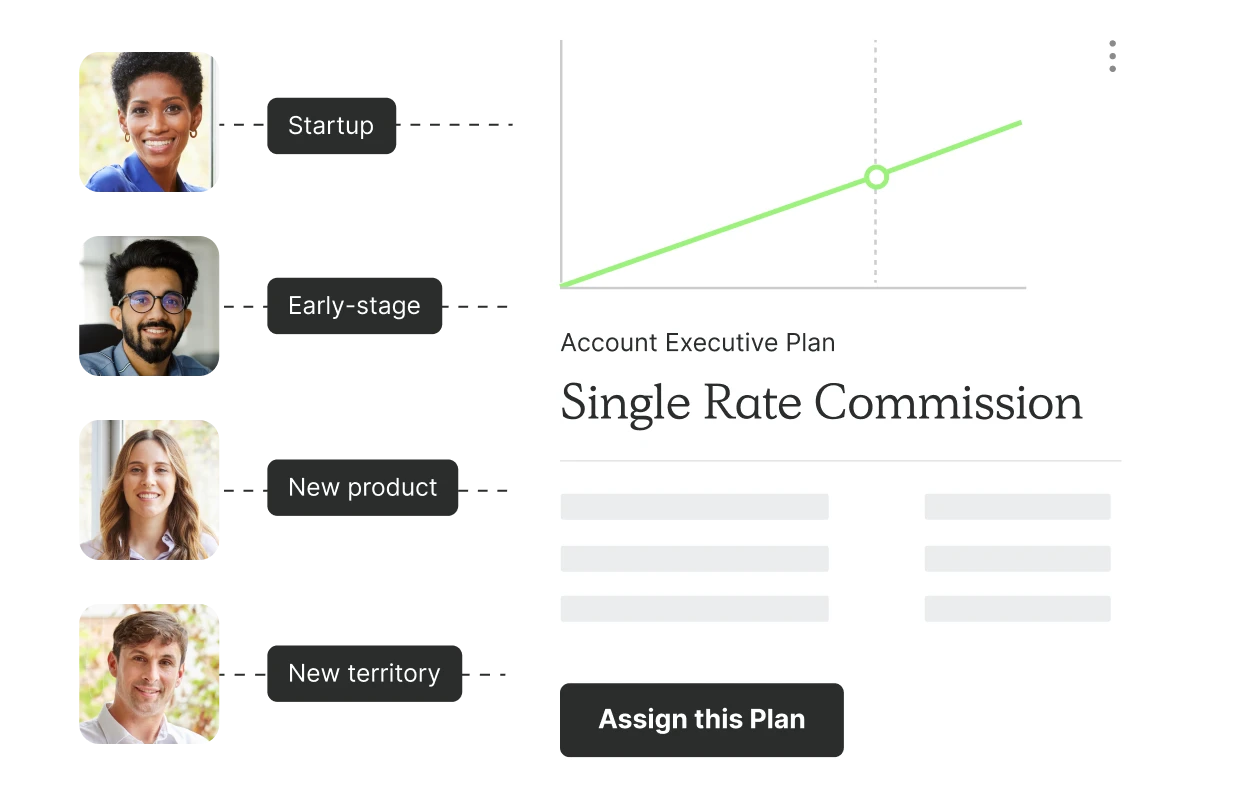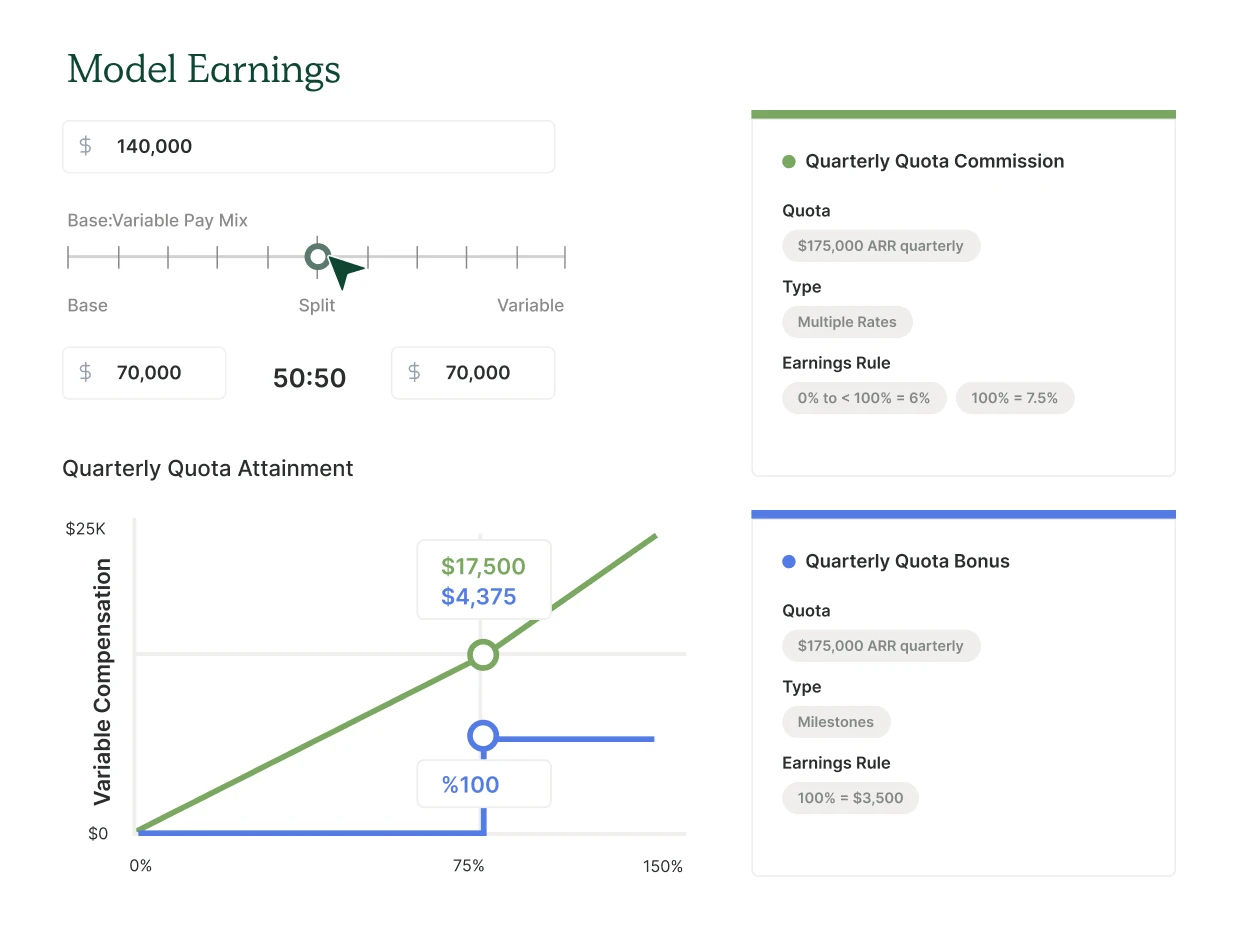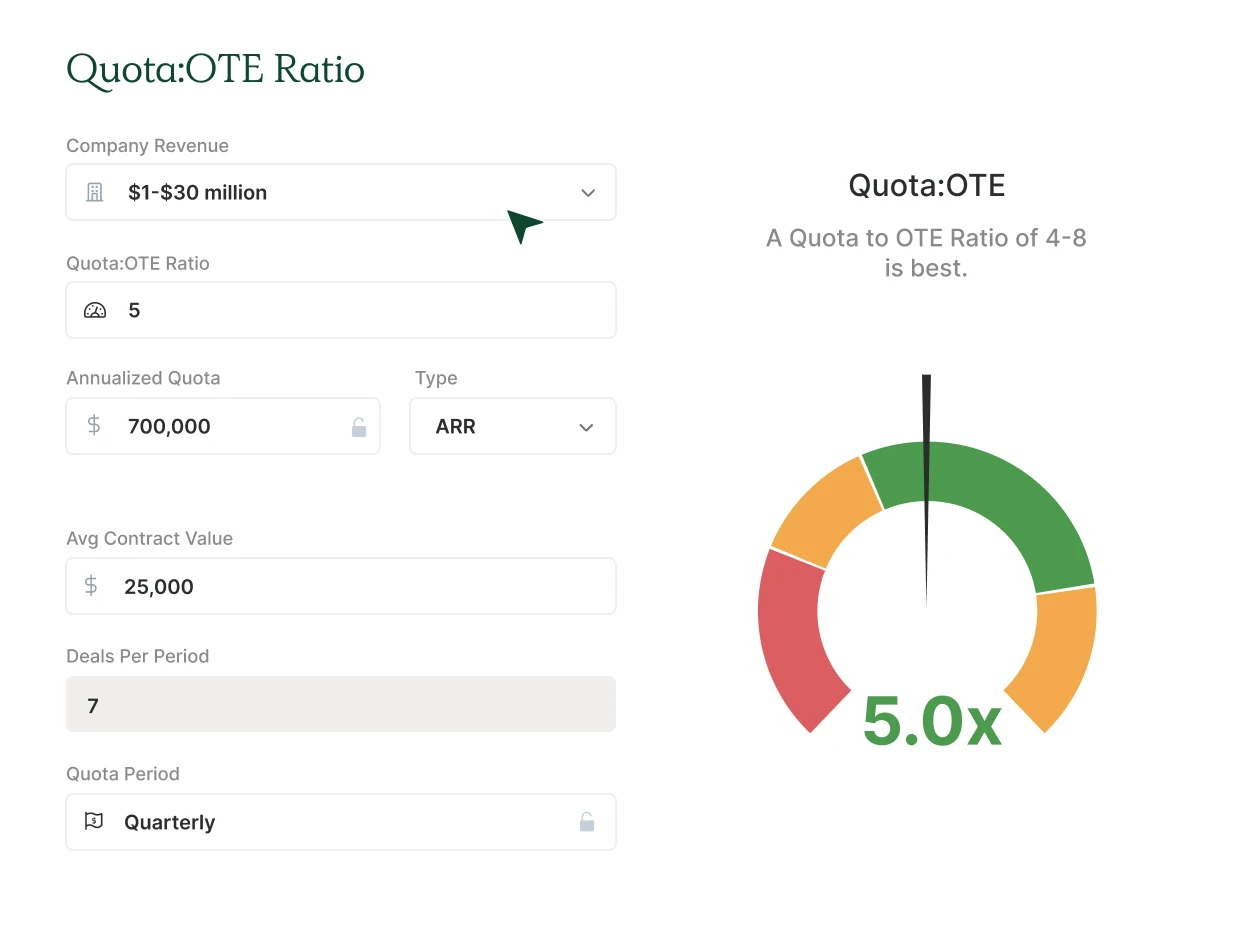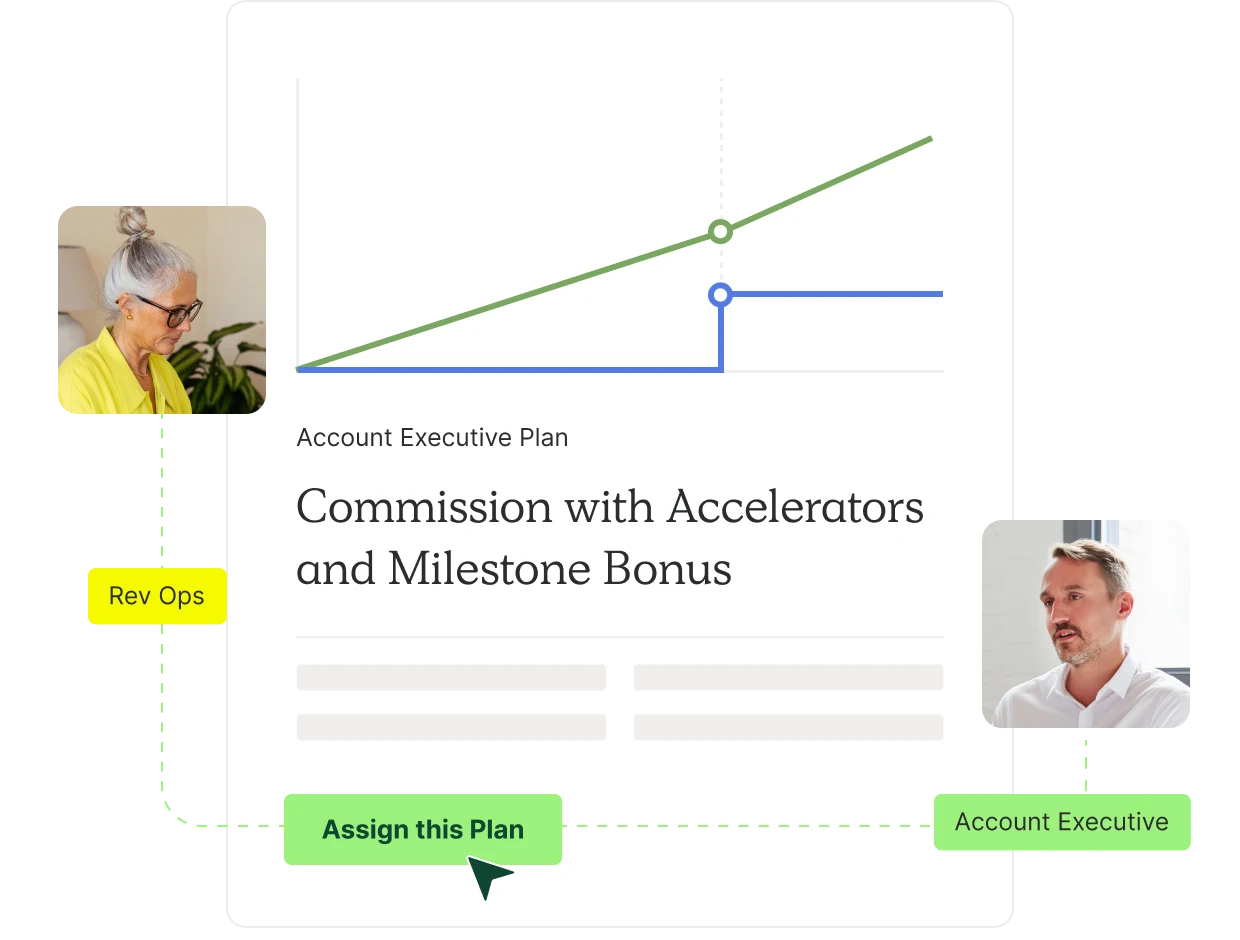Your “first” compensation plan
- Startup
- Early-stage
- New product
- New territory
The single-rate commission plan makes a great “first” plan, whether you’re a startup, entering a new territory, or launching a product or service. It’s straightforward and pays the same rate on every deal. However, single-rate commission plans lack the ability to capture the nuance of your business and may be considered overly simplistic.

Your “first” compensation plan
This plan is the simplest to execute and works across industries.
It’s also a great model for when you don’t have historical data to point to when building out your compensation strategy.
Like this plan? Sign up for QuotaPath for free to add your business inputs and adjust the variables.
See potential earnings based on your inputs and goal attainment progress.

Use the calculator to quickly measure how realistic, attainable, and healthy your OTE to quota ratio is.

Assign the plan to your team and automate sales commission calculations. Be confident your team is being paid fairly and accurately.

To customize this plan, you will input these 7 variables.
OTE combines base salary with variable pay and represents the total amount of money your reps can expect to earn if they hit 100% of quota.
Refers to the percentage of a salesperson’s total compensation, made up of base salary, commission, and other incentives. The most common pay mix in SaaS is 50/50.
Revenue is the total amount of income that a company generates from its primary operations. In SaaS, annual recurring revenue is one of the most important metrics.
This ratio quantifies how much larger a quota is to a sales rep’s OTE. The most common multiplier in SaaS is a quota 5x that of the OTE, but this will vary based on size and stage of the company.
An annualized quota is a sales goal that is set for a year
Often abbreviated to ACV, this number represents the average deal size that your company sells.
Your quota period sets the frequency at which your team’s quota resets. In SaaS, the most common quota period is quarterly. However, this number will vary based on your sales cycle.
Single rate commission plans are the simplest variable compensation plan out there. It’s for that reason that around 10% of all compensation plans follow this rule. The math is simple to calculate and since reps easily understand their compensation plans, they focus on closing deals rather than wasting time thinking about how to maximize their compensation.
No one got into sales because they love math… fortunately the math here is very simple. You take the variable compensation that a rep earns for hitting their target (say $50k a year) and divide that number by their target (say $500k a year). So it would be $50k/$500k which would give you .10 or 10% commission. Easy enough, right?
It certainly might be! If you’re looking to start out with a simple comp plan that gets the job done, you’re in the right place. It also allows you to add complexity to the plan via accelerators, bonuses, or SPIFs later on if you desire.
That’s up to you. Accelerators are a double-edged sword. While they can reward overperformance (good) they also add complexity to your compensation plan (bad). Around 80% of compensation plans include some sort of accelerator or decelerator, so you’d be in good company. However, it’s up to you if you want to add another layer to your sales commission plans.
Then this specific plan isn’t for you, but it might be close! If you want to offer a single rate commission for multiple products, you would simply want a plan with more than one single rate commission path. Calculating the commission rate for each of those paths is easy.Simply decide how much of a rep’s total variable compensation you want to dedicate to a product and then divide that number by how much you want your rep to sell of that product.

This comp plan works great for businesses with quotas that change throughout the year but the variable remains, like those that sell into education.

The most popular account executive commission structure in SaaS, this plan rewards over performance. Works best when you’re confident about your quotas and targets.

This comp plan works best when you’re very confident in your targets. But, if you see a lot of variability or seasonality between quota periods, like ecommerce, this won’t work as well.
Deliver visibility, automation, and seamlessness across the entire compensation process.